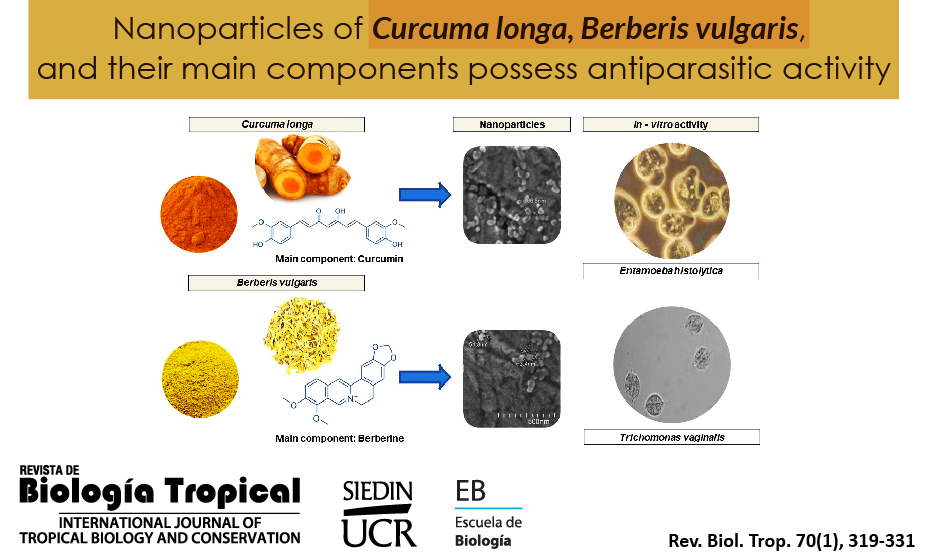Abstract
Introduction: In tropical and developing countries, pathogenic protozoa are a major public health problem. Objective: The main objective of this study was the evaluation of ethanol extracts of Curcuma longa and Berberis vulgaris, as well as their main components curcumin (Cur) and berberine (Ber) in non-encapsulated form and encapsulated into polymeric nanoparticles (NPs) on Entamoeba histolytica and Trichomonas vaginalis trophozoites as well as to evaluate the hemolytic activity. Additionally, we studied the morphology of the NPs, average particle size, polydispersity index (PDI), and encapsulation percentages (%EE) of the formulations. Methods: For this purpose, the activity of the encapsulated and non-encapsulated treatments against E. histolytica and T. vaginalis was evaluated by the microassay technique (in-vitro). In addition, the cytotoxic capacity was determined by the hemolysis technique in healthy erythrocytes. The size and morphology of the NPs were determined by photon correlation spectroscopy and scanning electron microscopy (SEM). Results: Phytochemical analysis of the extracts showed that C. longa had mainly tannins, phenols and flavonoids, and B. vulgaris alkaloids. The NPs were significantly (P < 0.001) more effective compared to their non-encapsulated counterparts, but CurNPs and BerNPs were the most efficient treatments. CurNPs showed IC50 values (μg/mL) of 9.48 and 4.25, against E. histolytica and T. vaginalis respectively, and BerNPs 0.24 and 0.71. The respective particle sizes and encapsulation percentages for CurNPs and BerNPs were 66.5 and 73.4 nm, 83.59 and 76.48 %, respectively. SEM shows that NPs had a spherical morphology. Finally, we analyzed whether ethanolic extracts and NPs induced hemolytic activity and found that significantly NPs reduced hemolysis compared to the non-encapsulated extracts. Conclusions: Therefore, these findings suggest that the use of NPs represent a valuable and novel source of administration of bioactive compounds for the therapeutic treatment of diseases caused by protozoa of clinical interest since they potentiate the amebicidal and trichomonicidal activity of the administered products without significant hemolytic activity.
##plugins.facebook.comentarios##

This work is licensed under a Creative Commons Attribution 4.0 International License.
Copyright (c) 2022 Revista de Biología Tropical



